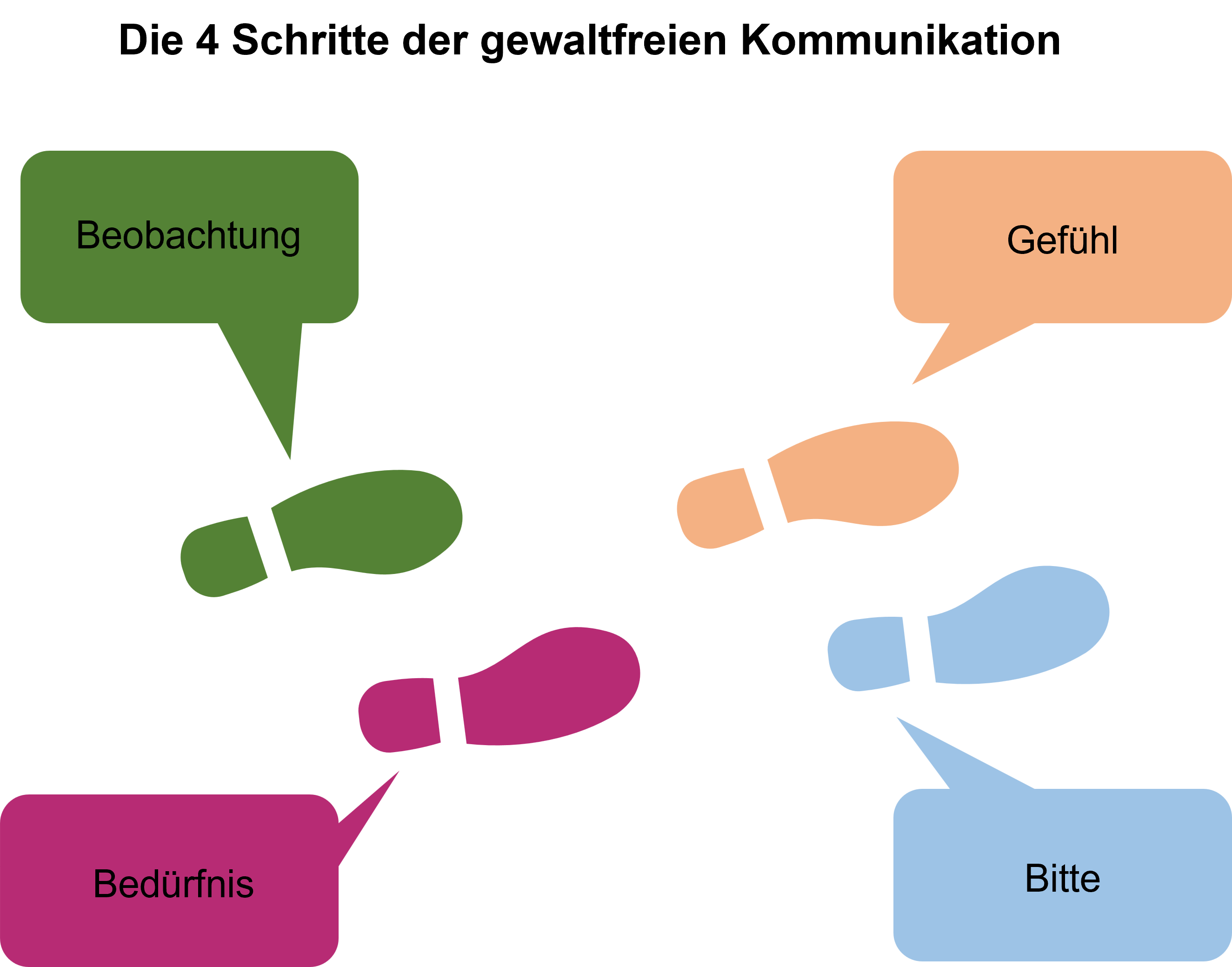Nonviolent Communication
Harmonious conflict handling in 4 steps

There are many ways to communicate with fellow human beings. One is verbal communication and the other is non-verbal communication. The latter includes both facial expressions and gestures.
Verbal Communication
Verbal communication means understanding between people through language. This includes written communication and sign language. This type of language is done consciously.
Nonverbal Communication
Non-verbal communication is communication through body language, i.e. facial expressions and gestures. In contrast to the verbal form, the non-verbal is mostly used unconsciously.
What Is Nonviolent Communication?
Although everyone knows intuitively how communication works with one another, dialogue with others is sometimes not that easy. In conflict talks in particular, it is advisable not to get angry or let the other person provoke you. But this is easier said than done.
In order for communication to succeed, Marshall Bertram Rosenberg developed the concept of nonviolent communication (NVC). Let's take a closer look at the basic model.
Marshall B. Rosenberg
Marshall B. Rosenberg was an American psychologist and successful mediator. In the 1960's he worked with civil rights activists and through his communications seminars helped communities positively change perceptions of racial segregation. In 1984, Rosenberg founded the "Center for Nonviolent Communication" to offer the topic of nonviolent communication to everyone.
The Basic Model Of The NVC
Nonviolent communication should support listening to the other person attentively and understandingly, as well as communicating one's point of view freely and honestly. It is not important that both interlocutors move within the framework of the NVC. Rather, it is about becoming aware of the needs of the person you are talking to and about your own sense of empathy.
The basic model of nonviolent communication consists of 4 steps:

Observation
The first step is to describe the facts. We state objectively what the reason for the conversation is. Rating, interpretation or needs are not relevant. This is to promote open and clear communication.
Feeling
In the second step, the feelings are named. What feelings does the observation evoke in us? This is also done without judgment.
Needs
The third step is about the needs. What needs are triggered by our feelings? What do we and our interlocutor need?
Request
The last step is about the request. The point here is that we communicate our concern (our request) in concrete terms. This also includes recognizing the concerns of our interlocutor. It is important to find solutions that meet all the needs and requests of both sides. To do this, we should ask ourselves what we would like to ask our interlocutor to do and what we ourselves are willing to do.
Marshall B. Rosenberg summarizes his basic model as follows:
"When I see A (observation) then I feel B (feeling) because I need C (need). I therefore want D (request)."
Example
We want to clarify this basic model of nonviolent communication with a concrete example:
Hannah and Peter are colleagues and share an office. The cooperation between the two works excellently and they also harmonize very well between people. But there is one thing that bothers Peter a lot. Hannah eats a yoghurt every day, but doesn't put the empty cup away afterwards. After 4 days there are 4 empty yoghurt cups on the desk. Peter is so upset that he yells at Hannah, "I've had enough! Just throw your disgusting yoghurt cups in the trash! That's disgusting!" Hannah is so taken aback by Peter's outburst that she starts crying and runs out of the office.
This conversation was not very successful. Peter didn't want to freak out and most of all he didn't want to hurt Hannah's feelings. How could he do better? Let's see how the conversation might go when Peter talks to Hannah using the basic model of nonviolent communication:
"I noticed that there are several empty yoghurt pots on the desk." (observation)
"I find it unpleasant and unappetizing when these empty cups are left standing in the warm office for days." (feeling)
"In order to be able to concentrate on my work, I need a clean and tidy desk." (need)
"Could you please dispose of your empty yogurt cup as soon as you've finished?" (request)
With this approach, Peter finds understanding with Hannah and their harmonious cooperation is not affected.
Conclusion
Of course, the basic model of nonviolent communication is not a panacea for every conflict discussion. However, it helps to remain calm in conflict talks, to keep an overview and, above all, to state the issue clearly and factually.
Using the basic model of nonviolent communication, we can learn to build an appreciative relationship with our interlocutor. The way we communicate is changing, as we not only become more receptive to our own feelings and needs, but are also able to ask about those of our interlocutor and perceive them much better.
The NVC model can therefore not only be used in conflict talks. It can also have a preventive effect in order to be able to have factual and constructive discussions that prevent escalation.